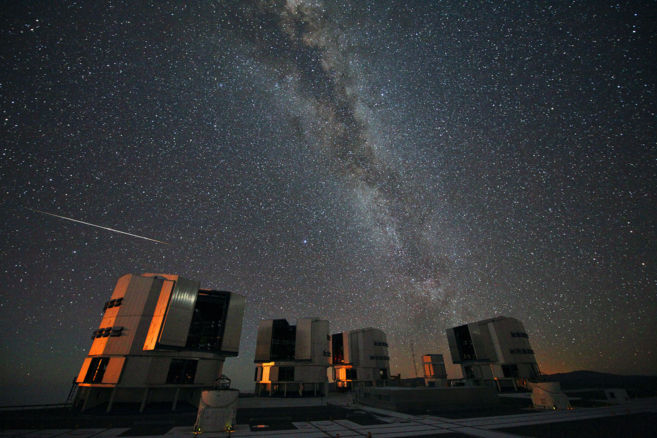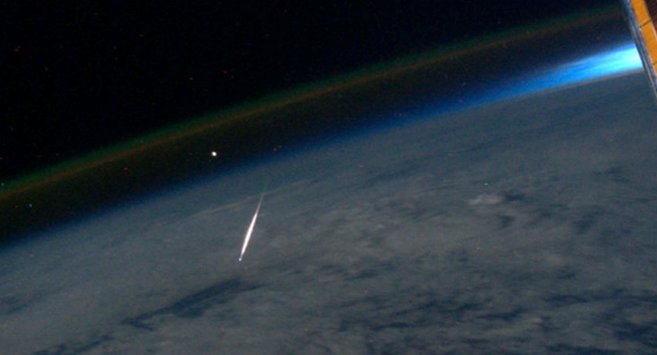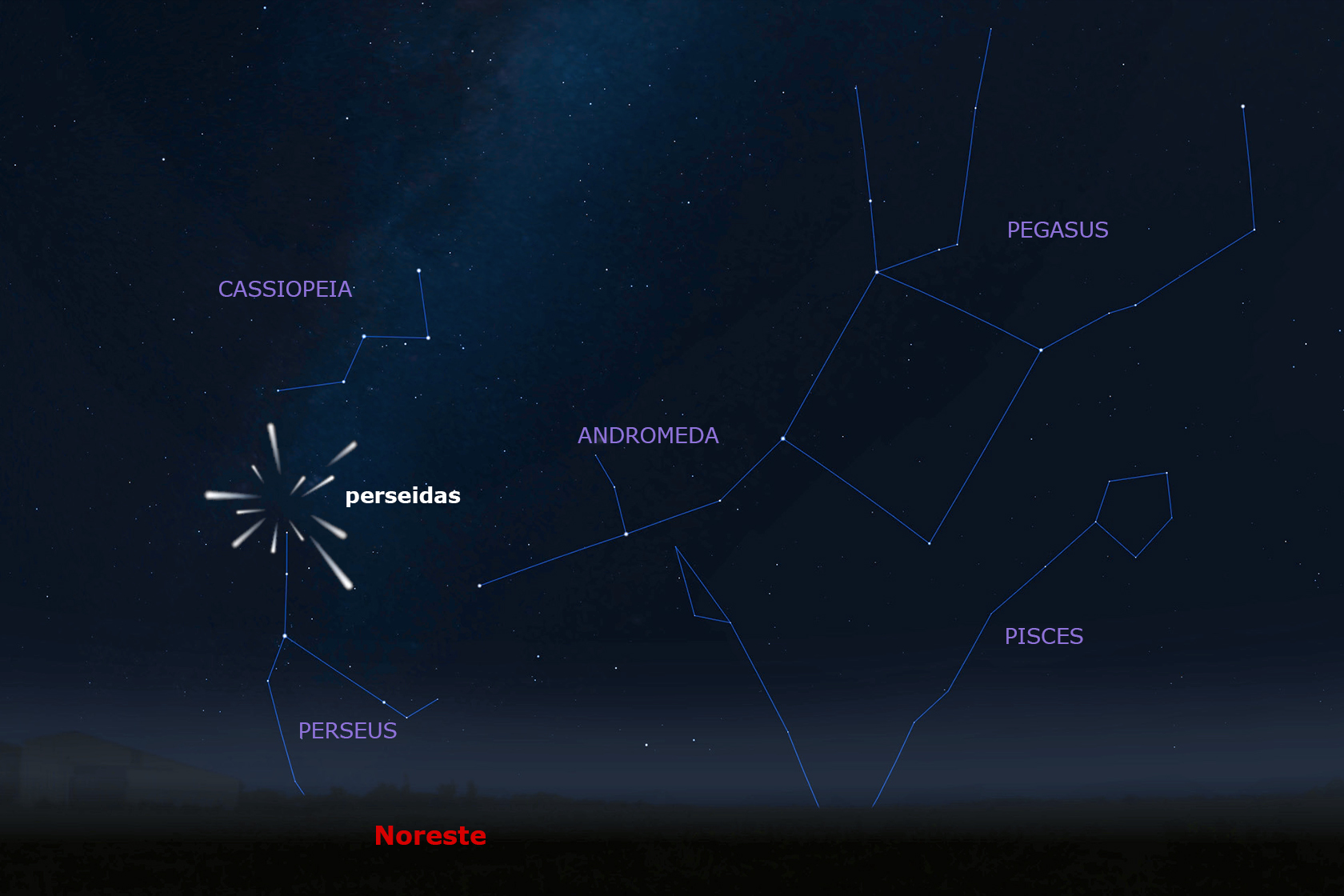Perseids
The Perseids are a meteor shower (commonly called "shooting stars") that happens every year around August 12. The Perseids also receive the popular name of "Tears of Saint Lawrence" because of the proximity of the maximum of the meteor shower to August 10, the day that commemorates the Spanish martyr Saint Lawrence.
The Perseids are visible from all over the northern hemisphere. The speeds of these meteors can exceed 50 kilometers per second and their activity rate can reach 200 meteors per hour. Although their maximum activity takes place during the nights of August 11 to 13, some Perseids can be observable roughly between July 17 and August 24. Their high activity and favorable atmospheric conditions for observation during the northern summer makes the Perseids the most popular, and most easily observed, of the meteor showers that take place throughout the year.
What to expect in 2025?
In 2025 the maximum of the Perseids will take place in August 12 at around 8 p.m. universal time. Unfortunately, the Moon will be close to its full phase, and its illumination will be high. The best moments for the observation will be shortly after the sunset, just before the moonrise or while our satellite will be low in the sky.
This shower usually have secondary peaks, and other nights close to that date might yield a large number of meteors, mainly before the rise of the moon.

A Perseid seen from the Paranal Observatory (Chile), August 2010 STÉPHANE GUISARD/ ESO
Why do they happen?
Comets, as they revolve around the Sun, release a trail of gas, dust, and debris (rocky materials) that lags behind in an orbit very similar to that of the parent comet.
Each comet thus forms a ring in which numerous cometary fragments can be found. When the Earth, in its movement around the Sun, encounters one of these rings, some of the rock fragments (meteoroids) are trapped by its gravitational field and enter the atmosphere at high speed, forming a meteor shower. Friction with atmospheric gas burns and vaporizes the meteors, which appear bright for a fraction of a second, forming what we popularly call shooting stars. This is not a star, but an incandescent dust particle.
The height at which a meteor becomes bright depends on the speed at which it enters the atmosphere, but it is usually around 100 kilometers. However, the high brightness and high transverse speed of some meteors cause a spectacular effect, producing the illusion that they are very close. Meteoroids with a mass of less than one kilogram are completely burnt in the atmosphere, but the larger and denser ones (of rocky or metallic consistency), form meteors: calcined remains that reach the ground.

Image of a meteor from the Perseids seen on August 13, 2011 from the International Space Station (NASA ISS028-E-24847).
Every year in early August our planet crosses the orbit of comet 109P/Swift-Tuttle, which has a period of 133 years and passed close to the Sun for the last time in 1992. This orbit is filled with small particles, like grains of sand or smaller, that have been released by the comet in its previous passages. When one of these particles, which once formed the comet's tail, enters the Earth's atmosphere at high speed, friction heats it up and burns at high altitude.
The corresponding meteor shower seems to have a single center of origin, a point from which all shooting stars seem to emerge. This point is called "radiant" and its location is used to name the meteor shower. Thus, the Perseids have their radiant in the constellation of Perseus.

The 'radiant' of the Perseids.
How to see the Perseids?
They can be observed from any location as long as it provides a dark sky. It is preferable to observe from a place that has few obstacles that limit our sight (such as buildings, trees or mountains), and not to use optical instruments that reduce our field of vision. Even though the Perseids seem to come from the constellation of Perseus (hence its name), they can be seen anywhere in the sky. It is advisable to look at the darkest areas, in the opposite direction to the position of the Moon if the observation is made before it sets. The most comfortable strategy is to lie down and wait for your eyes to get used to the darkness.
The number of observable meteors per hour is very variable. In a very dark place and with the radiant high over the horizon, it can be possible to see over a hundred meteors per hour. However, this rate can vary very quickly as a function of the density of fragments in the comet's wake, so concrete predictions about the specific number of meteors per hour depending on the day and time are difficult to make and are usually affected by high uncertainty.
